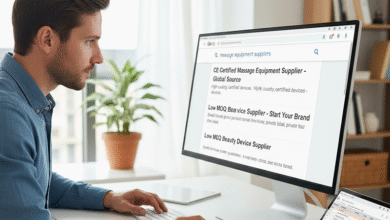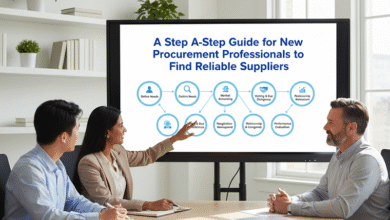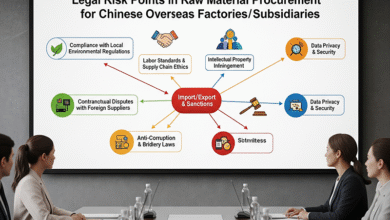5 Must-Check Points to Avoid Risks in Cross-Border E-Commerce Factory Audits


5 Must-Check Points to Avoid Risks in Cross-Border E-Commerce Factory Audits
For cross-border e-commerce buyers, factory audits aren’t just a “formality”—they’re your last line of defense against delayed shipments, poor-quality products, and compliance fines. Every year, thousands of buyers lose time and money because they skipped critical checks during audits. To help you avoid these pitfalls, we’ve broken down the 5 non-negotiable audit points that separate reliable suppliers from risky ones. This guide is optimized for both learning and Google search visibility, specifically targeting keywords like “cross-border e-commerce factory audit checklist” and “how to vet overseas suppliers.”
1. Verify Production Capacity: Don’t Just Trust “We Can Do It”
One of the biggest lies suppliers tell? “We can handle your 10,000-unit order in 30 days”—only to miss deadlines and force you to delay your product launch. During the audit, skip vague claims and dig into hard data instead.
First, ask for 6 months of recent production records. These documents will show if the supplier has consistently met orders of similar size to yours. For example, if you need 5,000 wireless earbuds, check if they’ve fulfilled 4,000+ unit orders for other clients in the past half-year. Moreover, look for trends—are their delivery times getting longer over months? This could signal capacity issues.
Additionally, take a tour of the production line. Count active machines, talk to floor managers about shift schedules (e.g., “Do you run 2 shifts or 3?”), and ask about backup plans for equipment failures. A supplier with only 5 working machines can’t realistically handle a large order if one machine breaks down. Furthermore, note if the factory is running at full capacity already—if so, they may struggle to fit your order into their schedule.
Finally, confirm raw material stock. Ask to see inventory logs for key materials—like lithium-ion batteries for electronics or organic cotton for clothing. A supplier with no stock on hand may struggle to start production on time, even if they claim to have the capacity. On top of that, ask how quickly they can restock materials; long lead times for raw goods will delay your order too.
Why this matters: A 2024 survey by Global Sourcing Report found that 42% of cross-border e-commerce delays stem from suppliers overpromising capacity. This check keeps your timeline on track.
2. Audit QC Processes: Look Beyond “We Have QC”
“Quality control” is a common buzzword in sourcing—but without documented, consistent processes, it means nothing. To avoid receiving batches of defective products (and angry customers), insist on seeing QC in action from start to finish.
Start by asking for the specific QC checklist the supplier uses for your product type. A clothing supplier, for instance, should have checks for stitching, fabric density, and color fastness. An electronics supplier, on the other hand, needs tests for battery life, charging speed, and FCC compliance. Make sure the checklist is detailed—vague items like “check quality” are a red flag.
Next, watch QC teams at work. Do they inspect 100% of products, or just a random sample? For high-value items like smartphones or smartwatches, 100% inspection is a must to catch small defects. In contrast, for low-cost items like keychains, random sampling (e.g., 10% of the batch) may be acceptable—but confirm the sampling method is standardized.
Also, review the supplier’s defect handling records. Ask: “What percentage of products fail QC monthly? How do you fix them?” A supplier with a 10% defect rate and no corrective plan is a clear red flag. Specifically, look for evidence of improvements—if their defect rate dropped from 15% to 5% in 3 months, it shows they’re taking QC seriously.
Pro tip: If the supplier hesitates to show you their QC processes, walk away. Transparency here is non-negotiable for long-term trust.
3. Confirm Destination Country Compliance: Avoid Customs Nightmares
Cross-border e-commerce buyers often get burned by suppliers who ignore import regulations. This mistake can lead to seized shipments, fines, or even banned products. During the audit, focus on compliance for your target markets—don’t assume the supplier knows the rules.
For EU-bound products, check if they meet CE marking requirements. This includes RoHS for electronics (to restrict hazardous substances) and REACH for chemicals (to ensure safety for humans and the environment). Ask for test reports from accredited labs to back up these claims; self-issued certificates are not enough. Furthermore, confirm the supplier updates their compliance regularly—EU regulations can change annually.
If you’re selling to the US, demand FCC certification for tech products, CPSIA compliance for children’s items, and FDA approval for food or beauty products. Without these, your goods may get stuck at US customs for weeks or months. On top of that, ask if they’ve ever had shipments rejected by US customs; a “yes” without a clear fix means they’re still not compliant.
For China (if exporting there), confirm the supplier meets GB standards—the national technical regulations for products sold in China. Also, ask for customs clearance documents from past orders to China to verify their track record. Specifically, check if the documents are recent (within the past year) to ensure their compliance is up-to-date.
Example: In 2023, a US-based e-commerce seller had 500 electric scooters seized. The issue? Their supplier skipped FCC testing. This single check could have saved them $50,000 in losses.
4. Check Labor & Ethical Standards: Protect Your Brand
Today’s consumers (and platforms like Amazon, Shopify) care deeply about ethical sourcing. A supplier with labor violations—such as child labor or unsafe working conditions—can destroy your brand’s reputation overnight. During the audit, prioritize ethical checks as much as quality or capacity.
First, ask for labor contracts and payroll records. Confirm workers are paid at least the minimum wage for their country and that they don’t work excessive overtime (over 60 hours/week is a red flag in most regions). Moreover, check if workers receive benefits like sick pay or insurance—this signals the supplier treats employees fairly.
Then, inspect the factory’s working conditions. Are the facilities clean, well-ventilated, and free of safety hazards? Look for fire exits (that aren’t blocked), first-aid kits (that are fully stocked), and proper protective gear for workers (like gloves or masks for chemical handling). Furthermore, talk to a few workers if possible—do they seem comfortable discussing their jobs? Hesitation may indicate issues.
Additionally, verify social compliance certifications. BSCI, Sedex, and SA8000 are globally recognized standards for ethical labor. A supplier with these certifications is more likely to follow fair practices. In contrast, a supplier who says “we don’t need certifications” is avoiding accountability.
Why it matters: A 2024 study by Shopify found that 68% of shoppers avoid brands linked to unethical sourcing. This check protects your reputation, not just your supply chain.
5. Validate Post-Sale Support: Plan for Mistakes
Even the best suppliers make mistakes. The difference between a good partner and a bad one is how they fix those mistakes. During the audit, test their willingness to support you after delivery—don’t wait for a problem to arise.
Start by asking: “If 5% of products arrive damaged, how long will it take to send replacements?” A good answer is “7-10 days.” A vague response like “We’ll look into it” means they may not prioritize your issue. Moreover, ask if they cover shipping costs for replacements—if they expect you to pay, it’s a sign they don’t take responsibility.
Next, check past client references. Call 2-3 of their e-commerce buyers and ask: “How did they handle problems with your order?” Did they offer refunds, replacements, or discounts to make it right? Specifically, ask about timeline—did the supplier resolve the issue within a week, or did it take months?
Finally, confirm warranty policies. For durable goods like furniture or appliances, get a written warranty that covers defects for at least 30 days post-delivery. This gives you peace of mind if issues pop up after launch. On top of that, ask if they offer technical support (e.g., for electronics)—this is critical if your customers have questions about the product.
Real story: A UK e-commerce buyer ordered 2,000 yoga mats that peeled after 1 use. Their supplier refused to replace them—costing the buyer $12,000 in customer refunds. This check would have uncovered the supplier’s poor post-sale support early on.
Final Tip: Use Third-Party Inspectors for Unbiased Results
If you can’t travel to the factory (or don’t have expertise in the product), hire a trusted third-party inspector. Companies like SGS, Intertek, or Bureau Veritas will give you an unbiased report on all 5 points. This saves you time and reduces the risk of missing critical issues. Moreover, many inspectors offer follow-up checks during production—this adds an extra layer of protection.
By focusing on these 5 must-check points, you’ll turn factory audits from a “task” into a “shield” against cross-border e-commerce procurement risks. For more tips on vetting suppliers, check out our [Global Procurement Guide](link to your procurement guide page) or browse our verified supplier directory on globalsource.click.
#CrossBorderEcommerce #FactoryAuditChecklist #GlobalSourcingTips




